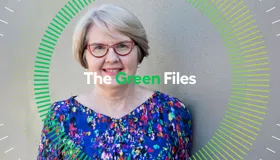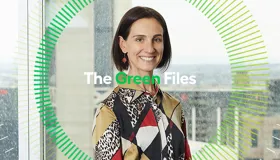
Demand for green finance set to grow
The Green Files is a unique CEFC series where we talk to the people making a difference in the race to net zero emissions.
14 December 2022
Across Australia, residential buildings are responsible for around 24 per cent of electricity use and 12 per cent of the nation’s carbon emissions. It’s a significant amount and one of the key reasons the CEFC is driving investment in green residential assets with innovative providers, such as Plenti.
“We've been in the green loan space since 2017 when we started our collaboration with the CEFC, predominantly to provide finance to consumers to assist them in purchasing green or energy efficient products,” says Ben Milsom, Co-founder and Chief Commercial Officer of Plenti.
“When we started, we were very focused on the solar and battery sector, which has been an amazing success story in Australia,” says Ben. “The demand for solar and battery has remained strong, but we’re starting to see increasing demand for some of the other technologies that can help offset energy costs.
If you look at where that investment is going to happen, new home builds will play an important part of it, but 86 per cent of Australian households live in existing buildings and there’s enormous opportunities there.Ben MilsomCo-founder and Chief Commercial Officer of Plenti
Huge opportunities in electrification of older homes
In fact, greener homes are also healthier homes, with evidence that energy efficiency improvements deliver wide-ranging health benefits – on top of lower energy consumption and the satisfaction of a lighter carbon footprint.
Sustainability Victoria’s Healthy Homes Program reported that making homes warmer in winter had a big impact on healthcare expenses – of almost $900 per person in winter – with the benefits ranging from reduced breathlessness to improved quality of life, particularly in mental health and social care aspects.
The three-year study found that every dollar saved in energy costs was matched by a $10 saving in health costs. And the cost benefit analysis was pretty good too.
A relatively minor energy efficiency upgrade to an existing home – of about $2,800 – could include simple fixes such as installing insulation, sealing draughts, and installing energy efficient heating. Over a 10-year period, the combined energy and health net saving would be almost $4,800.
Toby Cumming, Sustainability Victoria’s Research Team Leader, says: “One of the things we saw in Healthy Homes time and again was people being very enthusiastic about these changes, but just not being able to afford them,” says Toby.
The banking and financial sector can play a really important role here.Toby CummingSustainability Victoria’s Research Team Leader
Green finance a key piece of the puzzle
Which is where green loans come in. Typically offered at reduced borrowing rates, green loans are an increasingly important financial tool when it comes to giving households an extra incentive to switch to greener, more energy efficient homes.
According to Plenti’s Ben Milsom: “I think we'll continue to see innovation by providers like Plenti, who are looking for new ways to either deliver finance at the point of sale – or provide opportunities for people to make continued investment in the energy efficient technologies, as they make other investments. So, for example, one of the products that we're building is around an EV offering that allows people to access finance for other energy efficiency products,” he says.
“Through bundling of both energy supply and finance to help drive uptake by consumers, we’re making the purchase journey just an easier, simpler one.”
Ben expects this demand will increase even further as energy prices bite, and Australians become more switched on to the many benefits of greener living.
“If you look at the most likely scenario set out in the Australian Energy Market Operator (AEMO) 30-year roadmap, the scale of the investment required by consumers to meet forecast energy needs is huge,” he says.
“That will be helped with government incentives, but a huge chunk of the billions of dollars of capital investment will need to come from households, assisted by financiers like Plenti.”




